Afternoon Dream |
|||||||||||||||||||
 |
 |
||||||||||||||||||
Crocheted jumper for children in DROPS Sky. The piece is worked top down, with round yoke and textured pattern. Sizes 2 – 12 years.
DROPS Children 37-13 |
|||||||||||||||||||
|
------------------------------------------------------- EXPLANATIONS FOR THE PATTERN: ------------------------------------------------------- CHAIN STITCH: If you work outermost on the hook, the chain stitch will often be too tight; 1 chain stitch should be as long as 1 double crochet/treble crochet is wide. CROCHET INFORMATION: At the beginning of each round of double crochets, work 1 chain stitch (does not replace the first double crochet). Finish the round with 1 slip stitch in the first double crochet on the round. At the beginning of each round of treble crochets, replace the first treble crochet with 3 chain stitches. Finish the round with 1 slip stitch in the 3rd chain stitch. PATTERN: See diagrams A.1 and A.2. CROCHET TIP (for chain-stitch ring): When working the 8 chain stitches in A.1, it is important that you maintain the crochet tension or the pattern will be too tight in height. 8 chain stitches should measure 4.5 cm in length (without stretching). If the chain stitches do not measure 4.5 cm, work the number of chain stitches necessary to give you 4.5 cm in length. INCREASE TIP (evenly spaced): To work out how to increase evenly, count the total number of stitches on the round (e.g. 189 stitches – each chain-stitch ring is counted as 1 stitch) and divide by the number of increases to be made (e.g. 9) = 21. In this example, increase by working 2 treble crochets in every 21st treble crochet and 2 double crochets in the 1 double crochet in the chain-stitch ring when increasing in the ring. DECREASE TIP (for sleeves): Decrease 1 treble crochet by working 2 treble crochets together as follows: * Make 1 yarn over, insert the hook through the next stitch, pick up the strand, make 1 yarn over and pull the strand through the first 2 loops on the hook *, work from *-* 1 more time, make 1 yarn over and pull the strand through all 3 loops on the hook (= 1 treble crochet decreased). ------------------------------------------------------- START THE PIECE HERE: ------------------------------------------------------- JUMPER – SHORT OVERVIEW OF THE PIECE: The piece is worked in the round, top down. The texture on the yoke comes from chain-stitch rings which are crocheted together when the yoke is nearly finished. YOKE: Work 63-63-69-69-72-72 chain stitches with Sky and hook size 4 mm. Form them into a ring with 1 slip stitch in the first chain stitch worked – read CHAIN STITCH! Work 1 chain stitch – read CROCHET INFORMATION, then A.1 (= 3 stitches) to end of round (= 21-21-23-23-24-24 times in width). REMEMBER THE CROCHET TENSION! When A.1 has been completed there are 189-189-207-207-216-216 stitches on the round (the chain-stitch ring is counted as 1 stitch). The piece measures approx. 13 cm. Repeat the last round in A.1 until the piece measures 13-13-14-14-15-15 cm. Now work the chain-stitch rings on the yoke together vertically as follows: Insert the hook from the right side, down into the first chain-stitch ring at the top of the neck, pull the 2nd chain-stitch ring through the first ring, insert the hook down through the 2nd ring and pull the 3rd chain-stitch ring through the 2nd ring. Continue onwards like this until all the chain-stitch rings have been crocheted together. Work 1 round of treble crochets and increase 0-9-0-11-12-24 stitches evenly spaced – read INCREASE TIP and around the last chain-spaces work 1 slip stitch = 189-198-207-218-228-240 stitches. Now all the chain-stitch rings have been fastened together and will not unravel. Continue working with 1 treble crochet in each stitch until the yoke measures 15-15-16-17-18-19 cm. Now divide the yoke for the body and sleeves as follows: Work 1 treble crochet in each of the first 27-29-30-32-34-36 treble crochets (= half back piece), skip the next 40-41-43-45-46-48 treble crochets for the sleeve, work 4 chain stitches (= in side under the sleeve), work 1 treble crochet in each of the next 55-58-61-64-68-72 treble crochets (= front piece), skip the next 40-41-43-45-46-48 treble crochets for the sleeve, work 4 chain stitches (= in side under the sleeve), work 1 treble crochet in each of the remaining 27-29-30-32-34-36 treble crochets (= half back piece). Body and sleeves are finished separately. THE PIECE IS NOW MEASURED FROM HERE. BODY: Work 1 treble crochet in each treble crochet and 1 treble crochet in each of the 4 chain stitches under the sleeves = 117-124-129-136-144-152 treble crochets on the round. Continue with 1 treble crochet in each treble crochet until the piece measures 16-20-23-26-29-32 cm from the division. Work 1 round where you increase 3-2-3-2-3-1 treble crochets = 120-126-132-138-147-153 treble crochets. Work A.2 for the whole round (= 40-42-44-46-49-51 repeats in width). When A.2 has been worked for 3 cm, cut and fasten the strand. The jumper measures approx. 36-40-44-48-52-56 cm from the shoulder down. SLEEVE: Start mid under the sleeve and fasten the strand with 1 slip stitch in the 2nd chain stitch under the sleeve, work 3 chain stitches, then 1 treble crochet in each chain stitch, 1 treble crochet in each treble crochet and 1 treble crochet in each of the last chain stitches under the sleeve = 44-45-47-49-50-52 treble crochets. Insert a marker thread at the beginning of the round (= mid under the sleeve). Allow the thread to follow your work onwards; it will be used when decreasing later. When the sleeve measures 3 cm, decrease 1 treble crochet on each side of the marker thread – read DECREASE TIP. Decrease like this every 2-3-3-5-6-6 cm a total of 5 times = 34-35-37-39-40-42 stitches. Continue working treble crochets until the piece measures 15-21-24-28-32-36 cm from the division. Work 1 round where you decrease 1-2-1-0-1-0 treble crochets evenly spaced = 33-33-36-39-39-42 treble crochets. Work A.2 for the whole round (= 11-11-12-13-13-14 times in width). When A.2 has been worked for 3 cm, cut and fasten the strand. The sleeve measures approx. 18-24-27-31-35-39 cm from the division. Work the other sleeve in the same way. NECK-EDGE: Work 1 double crochet in each chain stitch worked at the beginning of the piece. Cut and fasten the strand. |
|||||||||||||||||||
Diagram explanations |
|||||||||||||||||||
|
|||||||||||||||||||

|
|||||||||||||||||||
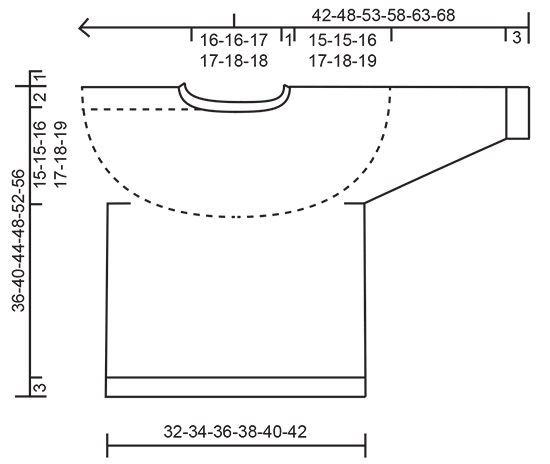
|
|||||||||||||||||||
|
Have you made this or any other of our designs? Tag your pictures in social media with #dropsdesign so we can see them! Do you need help with this pattern?You'll find tutorial videos, a Comments/Questions area and more by visiting the pattern on garnstudio.com. © 1982-2024 DROPS Design A/S. We reserve all rights. This document, including all its sub-sections, has copyrights. Read more about what you can do with our patterns at the bottom of each pattern on our site. |
|||||||||||||||||||








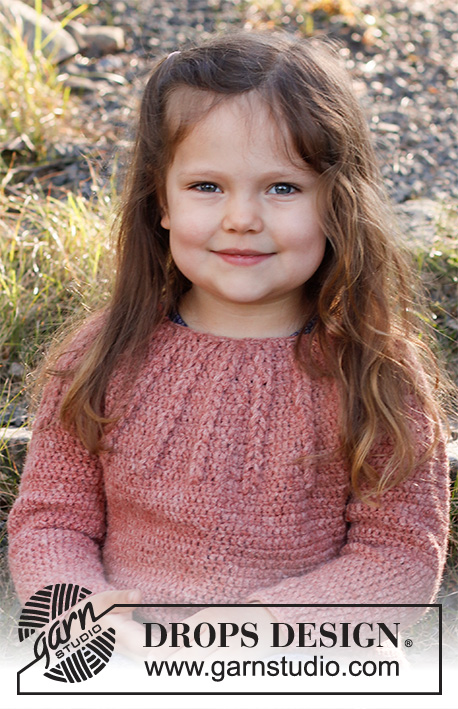


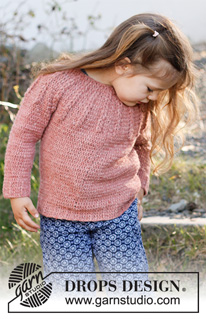
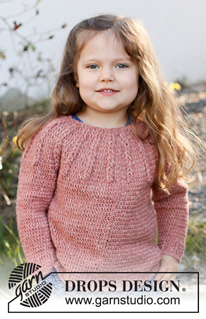
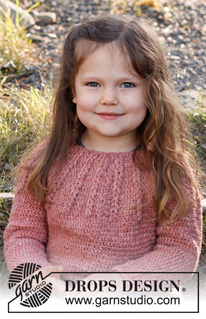
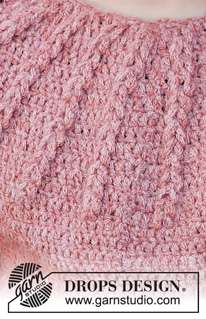











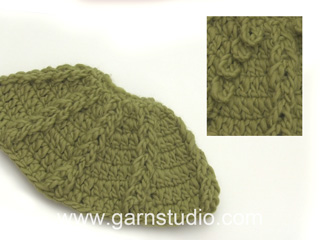
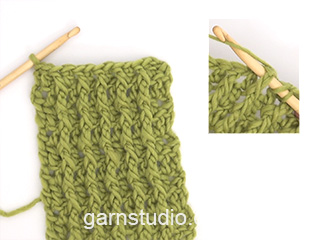



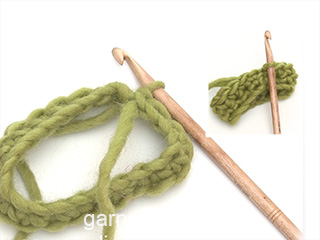
























Comments / Questions (8)
Så fin! Ønsker mig så meget, at I laver flere opskrifter med hæklet tøj til børn (og voksne, for den sags skyld), i stedet for så mange huer og sutsko. Vi mangler dem :-)
18.10.2022 - 14:09Guten Abend, wie werden de Bündchen an den Ärmeln gehäkelt?
16.07.2021 - 23:49DROPS Design answered:
Liebe Anneliese, die werden wie im Diagram A.2 gehäkelt, dh *1 Stäbchen in je die nächsten 2 Stäbchen, 1 Stäbchen um das nächste Stäbchen*, von *bis* wiederholen. Viel Spaß beim häkeln!
19.07.2021 - 08:21Hei! Jeg er relativt nybegynner men vil så gjerne lage denne. Kan dere lage en pdf eller skrevet instruksjon på denne? Jeg skjønner ikke diagram og videoer er ikke til hjelp når man må spole frem og tilbake. Jeg savner også bilder fra hvordan det ser ut underveis i heklingen.
26.04.2021 - 21:17DROPS Design answered:
Hei Veronica. Vi har dessverre ikke mulighet til å skrive denne gensren mer detaljert enn hva du allerede ser. Men lag deg en prøvelapp der du øver deg på diagrammet og velg hastighet (tannhjulet og Playback speed) på videoen, slik at du kan hekle på prøvelappen samtidig som du ser på hjelpevideoen. Kanskje det vil hjelpe deg. Lykke til. mvh DROPS design
03.05.2021 - 12:09Har i ikke denne som PDF, med en beskrivende opskrift? Jeg kan ikke finde ud af at læse diagrammer😒
16.03.2021 - 16:40DROPS Design answered:
Hej Mette, Se videoen nederst i opskriften :)
17.03.2021 - 14:58Virkar strlk 2 Efter att jag har fäst luftmaskringarna och ska börja dela fram och bakstycke, har virkat 27 stolpar, ska nu hoppa över de nästa 40 maskorna men förstår inte vad som menas med "virka 4 luftmaskor". Ska jag virka 4 lm i de 40 maskorna eller bara i den sista maskan av de 40?
19.02.2021 - 16:20DROPS Design answered:
Hei Nina. Når du har heklet 27 staver, hekler du 4 luftmasker, så hopper du over 40 masker, deretter hekler du 1 stav i den 41. maske (følg deretter oppskriften: Hekle 1 stav i hver av de neste 55 stavene (= forstykke), hopp..... ). De 40 maskene skal senere hekles til erm og de 4 luftmaskene blir "under"ermet og ved neste omgang skal det hekles 1 stav i hver av de 4 luftmaskene under ermene. mvh DROPS design
10.03.2021 - 09:08Hej. När jag ska virka de 8 luftmaskringarna i en maska, ska jag först höra en fast maska / stolpe och där efter göra de 8 luftmaskorna? Virkar strlk 2 år
12.02.2021 - 08:24DROPS Design answered:
Hej Moa, se vores vide: Hur man virkar en strukturfläta
16.02.2021 - 15:10Guten Tag. Ich drucke mir gerne Anleitungen aus, um besser das Projekt zu arbeiten. Allerdings ist mir letzte Zeit aufgefallen, dass die Diagramme nicht mit gedruckt werden. Woran liegt es? Die Diagramme sind vorhanden, aber da steht dann nur Diagramm... mit der jeweiligen Nr. Das Diagramm muss ich quasi extra als Bild herunterladen. Das ist nicht so praktisch und unübersichtlich. Können Sie mir da bitte weiter helfen bzw liegt es an irgendeiner Einstellung?
08.02.2021 - 13:00DROPS Design answered:
Liebe Frau Friesen, prüfen Sie mal die Druckereinstellungen, damit keine andere vorherige Einstellungen gespeichert wurden, dh alle Seiten müssen gedruckt sein. Viel Spaß beim häkeln!
08.02.2021 - 15:11Bonjour j essaye de faire un pull réf sk-011-bn je le fais en taille 9/10 ans on doit monter 72 maille mais j ai un soucis cela ne passe pas par sa tête (tour de tête 54 cm) pouvez vous me dire comment faire ou puis je vous appeler madame jollet
28.11.2020 - 16:11DROPS Design answered:
Bonjour Mme Jollet, vérifiez bien votre tension et attention à ne pas serrer la chaînette de base; vous pouvez utiliser un crochet d'une taille au-dessous par exemple, cela pourra aider à vous donner l'élasticité nécessaire au premier tour. Bon crochet!
30.11.2020 - 08:39